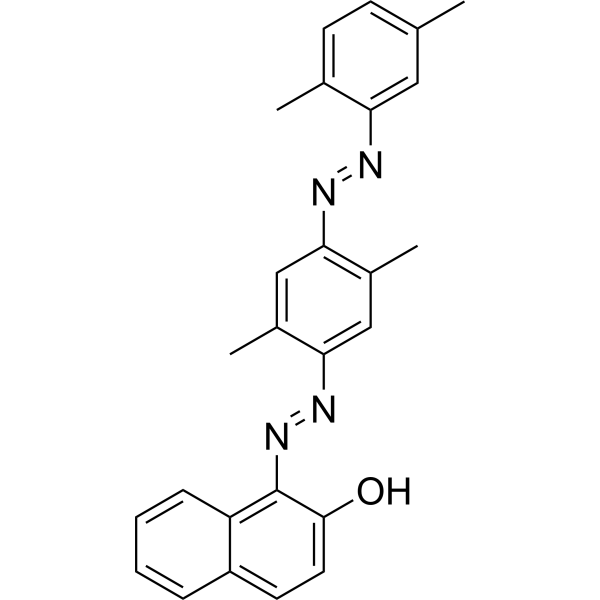
Oil Red O
CAS No. 1320-06-5
Oil Red O( —— )
Catalog No. M29023 CAS No. 1320-06-5
The dry dye Oil red O is used for the preparation of a staining solution that can be used for the detection of lipids in histological cryo sections.
Purity : >98% (HPLC)
 COA
COA
 Datasheet
Datasheet
 HNMR
HNMR
 HPLC
HPLC
 MSDS
MSDS
 Handing Instructions
Handing Instructions
| Size | Price / USD | Stock | Quantity |
| 100MG | Get Quote | In Stock |


|
| 200MG | Get Quote | In Stock |


|
| 500MG | Get Quote | In Stock |


|
| 1G | Get Quote | In Stock |


|
Biological Information
-
Product NameOil Red O
-
NoteResearch use only, not for human use.
-
Brief DescriptionThe dry dye Oil red O is used for the preparation of a staining solution that can be used for the detection of lipids in histological cryo sections.
-
DescriptionThe dry dye Oil red O is used for the preparation of a staining solution that can be used for the detection of lipids in histological cryo sections.
-
In Vitro——
-
In Vivo——
-
Synonyms——
-
PathwayOthers
-
TargetOther Targets
-
Recptor——
-
Research Area——
-
Indication——
Chemical Information
-
CAS Number1320-06-5
-
Formula Weight408.49
-
Molecular FormulaC26H24N4O
-
Purity>98% (HPLC)
-
SolubilityIn Vitro:?DMSO : 4.17 mg/mL (10.21 mM)
-
SMILESOC1=CC=C2C=CC=CC2=C1/N=N/C3=CC=C(/N=N/C4=CC=CC(C)=C4C)C(C)=C3C
-
Chemical Name——
Shipping & Storage Information
-
Storage(-20℃)
-
ShippingWith Ice Pack
-
Stability≥ 2 years
Reference
molnova catalog



related products
-
1,3,4,6-Tetragalloyl...
1,3,4,6-Tetragalloylglucose is a useful organic compound for research related to life sciences.
-
Clioquinol
Clioquinol(Iodochlorhydroxyquin) is an antifungal drug and antiprotozoal compound.
-
Irisflorentin
Irisflorentin blocks apoptosis pathways, by exerting its effects by promoting rpn-3 expression to enhance the activity of proteasomes and down-regulating egl-1 expression.



 Cart
Cart
 sales@molnova.com
sales@molnova.com


